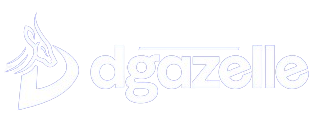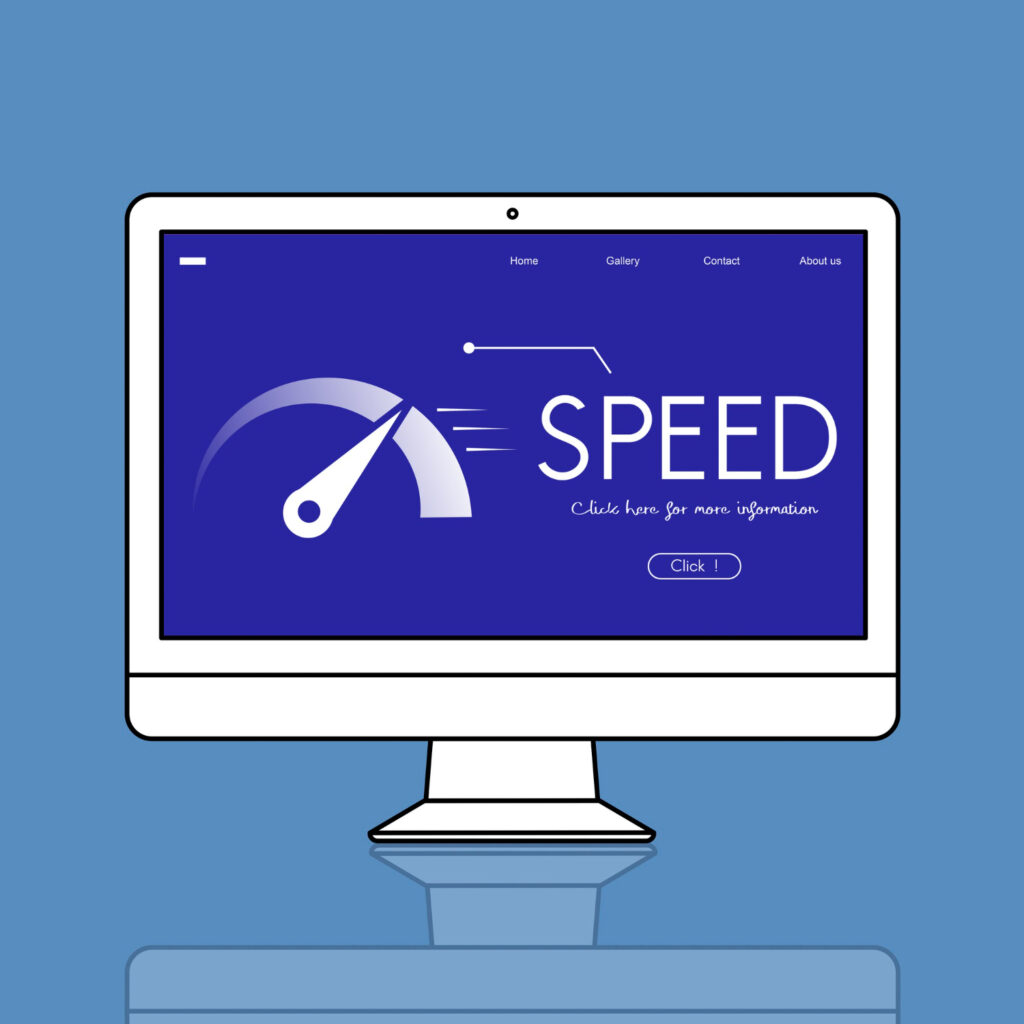Optimizing your website to load and display more quickly is known as webpage speed optimization. A number of variables, such as the kind of material on the website and user expectations, can affect the “optimal” speed of a website. Nonetheless, it is generally advised that a web page load in two to six seconds as a general rule.
Why is webpage speed important?
The demand for quick websites is growing as surfing habits change and attention spans get shorter. Here’s why it’s so important to optimize the loading time of your website:
- Speed directly affects how users interact with your website. Statistics reveal that a site’s bounce rate — the percentage of visitors who leave the site without any interaction — reaches 53% if a website takes longer than 3 seconds to load.
- The speed of your website also plays a key role in your business’s bottom line. Studies show that 79% of shoppers who are dissatisfied with website performance are less likely to buy from the same site again. This is a clear indicator that a slow-loading site can hurt your sales.
- Search engines like Google consider page speed a ranking factor. Websites that load quickly are favored in search results, which can lead to increased visibility and organic traffic.
- A mobile-optimized site that loads quickly will enhance user engagement.
- Optimizing your website’s speed is also about preparing for growth. As traffic increases, a site that is already optimized for speed can better handle new users and increased interactions without degrading the user experience.
How webpage speed is measured
Accurately measuring a webpage’s speed is the first step in successful optimization. The following are some methods for methodically testing and evaluating the functionality of your website:
- Instead of waiting until your website launches, test speed while it’s being developed. By taking a proactive stance, you may resolve performance problems before they affect your users.
- Utilize the developer tools in your browser: For instance, a full range of performance testing tools are available in Google Chrome’s Developer Tools. These tools are available by right-clicking on any page element, choosing “Inspect,” and then going to the “Performance” tab. Here, you may capture and examine the loading times of your webpages and pinpoint the precise components causing lag.
- Additionally, use Google PageSpeed Insights: Google’s free tool is a must-have for anyone trying to improve the speed of their website. PageSpeed Insights assesses the content of your website, gives you a performance rating for desktop and mobile versions, and presents a list of optimizations you
These tools give you insights into how different factors impact your overall speed in addition to helping you understand how quickly consumers can load your website. You can make sure that your website provides all users with a quick, effective, and pleasurable experience by continuously monitoring and improving its performance.
Best Practices to improve webpage speed
Enhancing your website’s speed is crucial for providing a better user experience and improving your site’s SEO – but how do you even start? Here are some best practices that can significantly cut down your load times and boost performance.
Optimize Media
Although they are among the simplest to optimize for speed gains, images frequently account for the largest portion of a page’s overall size.
Before you post an image to your website, start by making it smaller. Load times can be unduly increased by uploading larger-than-necessary photos and subsequently reducing their size. Another option is to attempt compressing them using programs like TinyPNG, Adobe Photoshop, or online compressors that lower file sizes without sacrificing quality.
Lastly, be sure to select the appropriate format. For instance, PNG works well for photographs that need transparency, whereas JPEG is better for pictures with a lot of color. Compared to JPEG and PNG, WebP is a more recent format that offers better quality outcomes with fewer file sizes.
Optimize fonts
Although web fonts are necessary for contemporary web design, improper use of them can cause your site to load more slowly. You may prevent fonts from slowing down your website’s speed by optimizing their loading.
Selecting the appropriate format is the best course of action in this situation. For web fonts, choose contemporary, effective formats like WOFF2, which offer superior compression and quicker load times.
Font-display should also be used. With the use of this CSS feature, you may manage the way fonts appear while they load, perhaps preventing text from becoming invisible while loading (also known as Flash of Invisible Text, or FOIT).
Make Javascript smaller.
Although JavaScript is frequently essential for creating dynamic and useful websites, improper use of it can have a major negative effect on how quickly pages load. Without affecting the functionality of your code, minifying JavaScript entails removing any extraneous characters, including whitespace, newline characters, and comments.
Make CSS smaller.
Minification is a straightforward but powerful technique to improve the functionality of your website. It entails making the code more efficient through optimization. The following explains minification’s operation and significance:
File sizes can be greatly decreased by eliminating extraneous characters, spaces, comments, and other components that the server doesn’t need to process the code. Because there is less data to send, this condensed version of your JavaScript or CSS loads considerably more quickly.
The process of minifying your CSS and JavaScript files can be automated with a number of tools. For instance, developers wishing to incorporate minification into their workflow frequently choose CSSNano and UglifyJS.
Render blocking assets
JavaScript and CSS files known as render-blocking resources stop a page from being seen until they have finished loading. Although they are frequently essential resources, improper management of them might cause a considerable delay in page rendering.
Techniques for managing resources that block rendering:
Determine which CSS is essential and insert it straight into the HTML by inlining it. This aids in rendering the website layout prior to loading the full CSS file.
Reduce unwanted CSS/JS: Tree shaking can get rid of unnecessary JavaScript code, which lowers file sizes, and tools like PurgeCSS or UnCSS can assist you in getting rid of unwanted CSS rules.
Caching
One technology that is essential to the transmission of content, particularly for websites with a worldwide audience, is caching. A material Delivery Network (CDN) makes sure that your material is always accessible to your users by keeping copies of your assets in several carefully chosen data centers. This close proximity improves the speed and responsiveness of your website by drastically cutting down on the amount of time it takes for data to go between the server and the user.
Because traffic is offloaded to CDN servers, your origin server must process fewer requests, which lowers latency and server strain. This enhances your server’s scalability and stability while also speeding up the website for users.
Steer clear of large DOM sizes.
Your website may become noticeably slower if the Document Object Model (DOM) is too big. It may take longer for a page to load and render if the DOM is huge since there are more nodes for browsers to parse.
By reducing the amount of superfluous nesting in your HTM, staying away from inline styles and superfluous scripts that might make your page appear larger, and use contemporary, effective CSS for layout and design, you can minimize the need for extra HTML components.
Take advantage of CDN
When it comes to speeding up the loading of your website, a Content Delivery Network (CDN) is revolutionary. In order to guarantee that your site’s static files (such as CSS, pictures, fonts, and JavaScript) are delivered from the server nearest to your user, CDNs store cached versions of your website in several different geographic regions.
Key Benefits of Using a CDN:
- Reduced latency: By serving files from locations near your users, CDNs reduce the time it takes for your content to be delivered, improving load times across the board.
- Decreased server load: Offloading the delivery of static resources to a CDN can reduce the load on your primary server, allowing it to perform better and handle dynamic content more efficiently.
- Simplified scalability: CDNs can handle sudden spikes in traffic by distributing the load, making your site more resilient and reliable under stress.
Consider your hosting company.
The performance of your website is greatly influenced by the hosting service you choose and the capabilities of your server. Even with the best optimization techniques, all of your hard work can be undone by a poor server response.
Look for quick response times (an average of less than 200 milliseconds), dependability (pick a host with a solid track record of uptime and consistent performance), and resource allocation when selecting a hosting provider. This guarantees that your hosting plan offers enough resources (such as CPU, RAM, and bandwidth) to meet the demands of your website, particularly during periods of high traffic.
JavaScript Async
Although JavaScript enhances a website’s functionality, improper management of it can also affect performance. JavaScript loads asynchronously to prevent it from interfering with the rendering of other page elements. This implies that as JavaScript loads in the background, users can begin engaging with the content that is visible.
The outcome? faster page loads. JavaScript doesn’t have to wait for the rest of your page to load thanks to asynchronous loading. As a result of seeing a functional page sooner, people will perceive your site as being much faster.
Adding the async or defer attributes to your HTML script tags will enable asynchronous loading. This instructs the browser to proceed without waiting for the script to load.
In conclusion
In addition to offering a better user experience, faster websites also score higher in search engine results, increasing their visibility and traffic. Enhancing site speed also increases user engagement and retention, which raises conversion rates and encourages return visits.
The significance of website speed optimization will only grow as online technology advances and user expectations rise.
Ready to accelerate your website’s performance? Let Dgazelle’s expert web design team help you do the heavy lifting and elevate your user experience.






